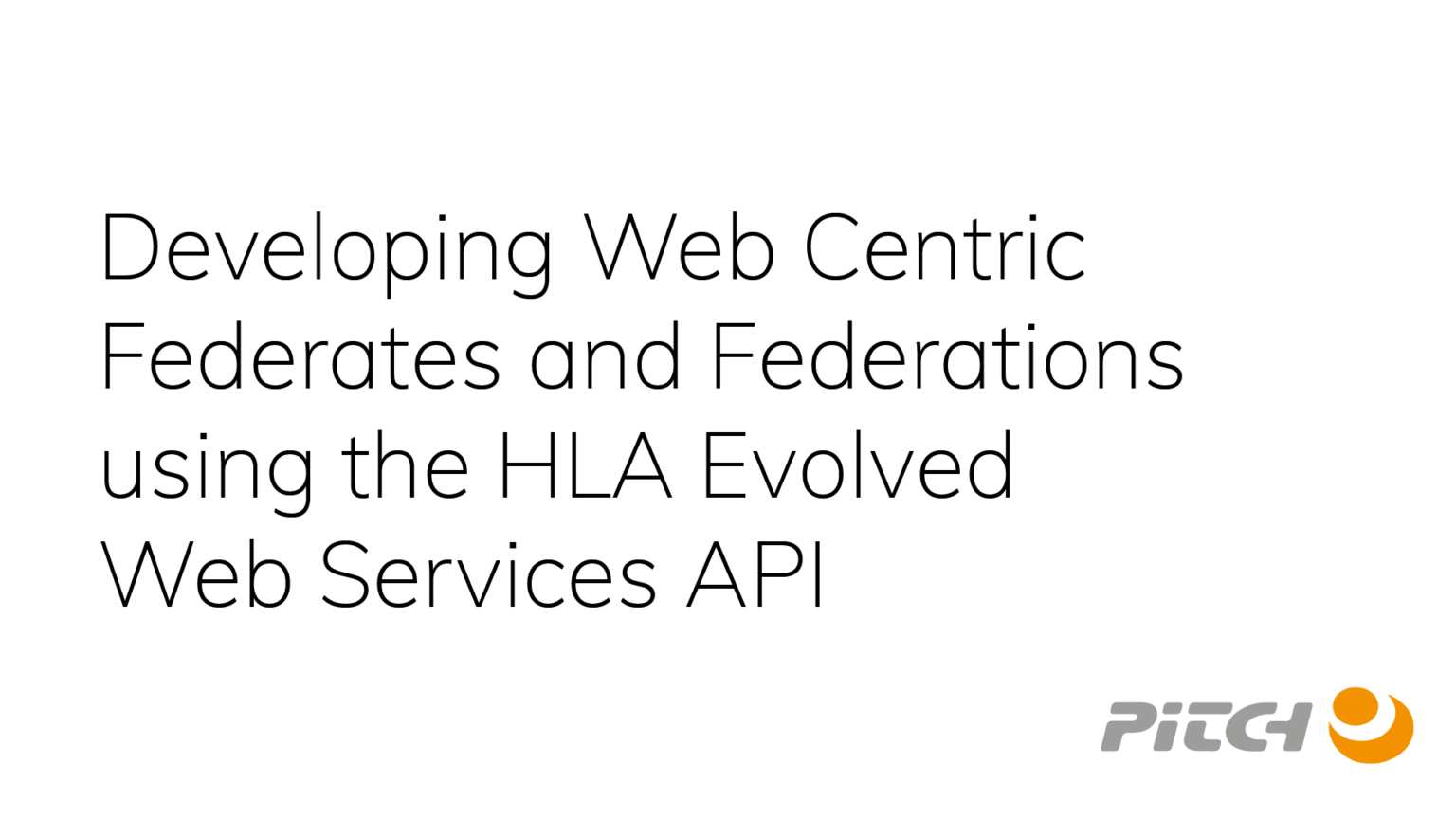ABSTRACT: The new Web Services API of HLA Evolved offers several new opportunities for federation developers, both from an architectural and a programming perspective. This paper provides an introduction and a number of recommended practices for federation designers and federate programmers, including some references to FEDEP.
The first and maybe most important step is to take a web-centric approach to the overall federation design. This includes deciding upon how the federation is to be provided as a service. How will executions and potential
participants be managed and how will authentication take place. When are federates allowed to join? Performance characteristics and fault tolerance need to be taken into considerations. It also includes determining reasonable update and interactions rates based on the expected available bandwidth. This in turn may introduce the need for deadreckoning
and similar methods.
The next step is to set up a productive development and debugging environment. A wide array of code generation and WSDL analysis tools are available. An RTI with a Web Service Provider component that follows the HLA WSDL standard is of course also needed.
When developing web services federates, some features may require special attention, including:
- Connection and authentication
- Session handling, time-outs and fault tolerance
- Bandwidth management and tuning
- Use of handles
- Data encoding and time representation
- Callback delivery
- Support services
- Long-haul deployment
Finally the pros and cons of Web Services based federates versus C++ and Java API federates are discussed.
Authors: Björn Möller, Clarence Dahlin, Mikael Karlsson
Publication: Proceedings of 2007 Spring Simulation Interoperability Workshop, 07S-SIW-107, Simulation Interoperability Standards Organization, March 2007.

